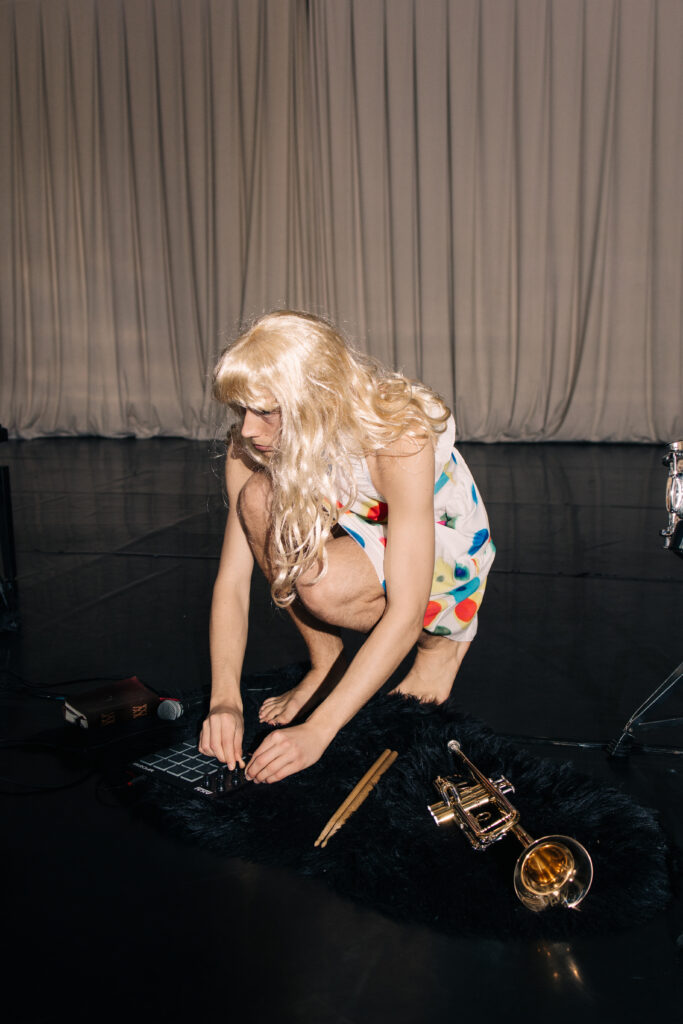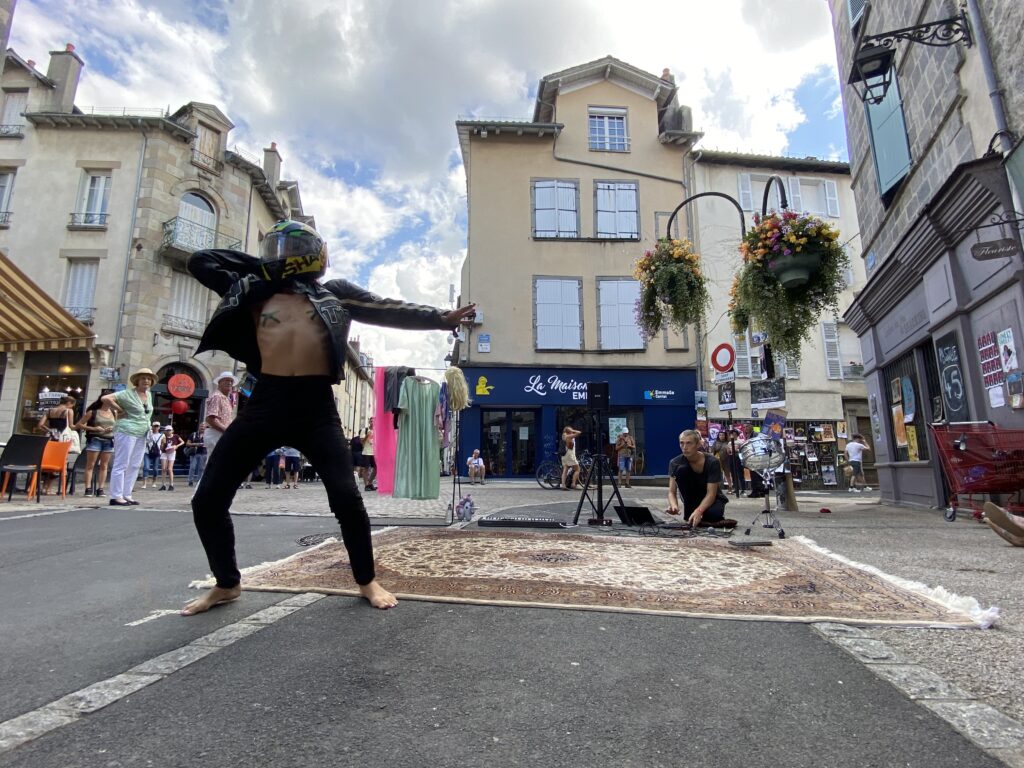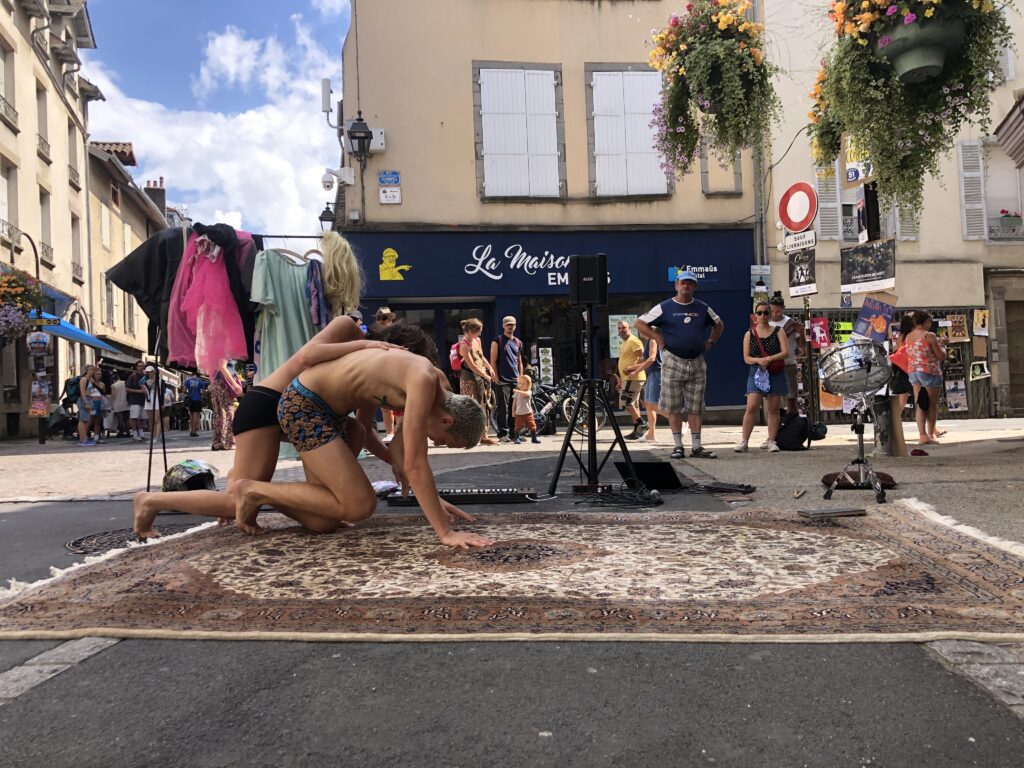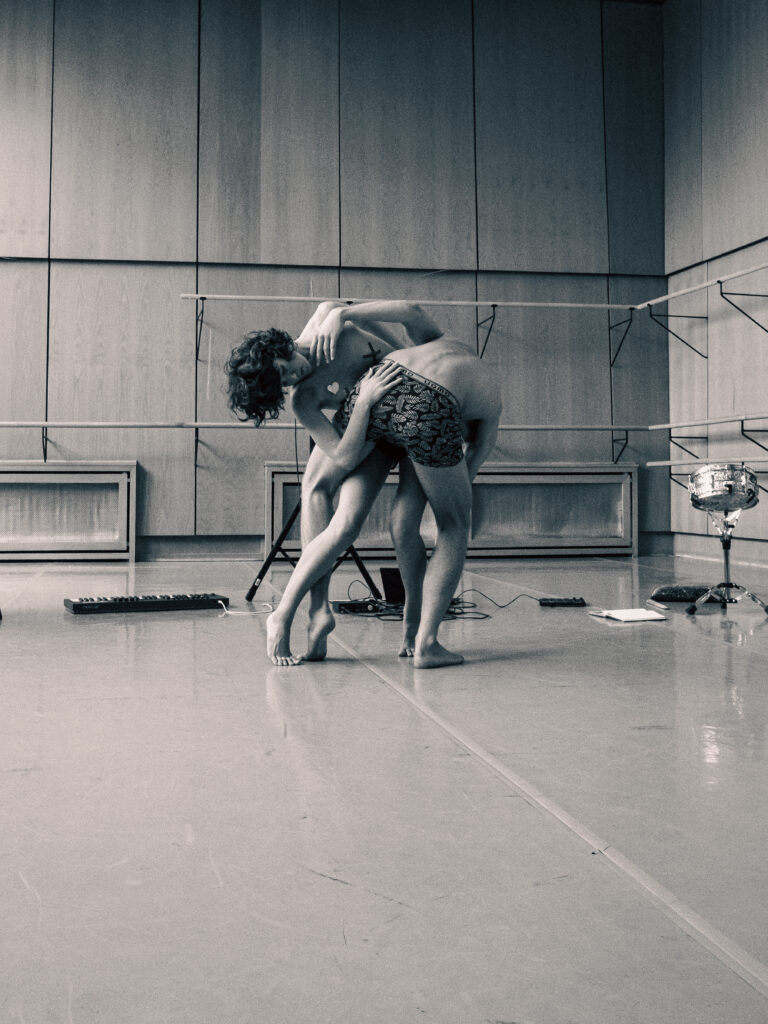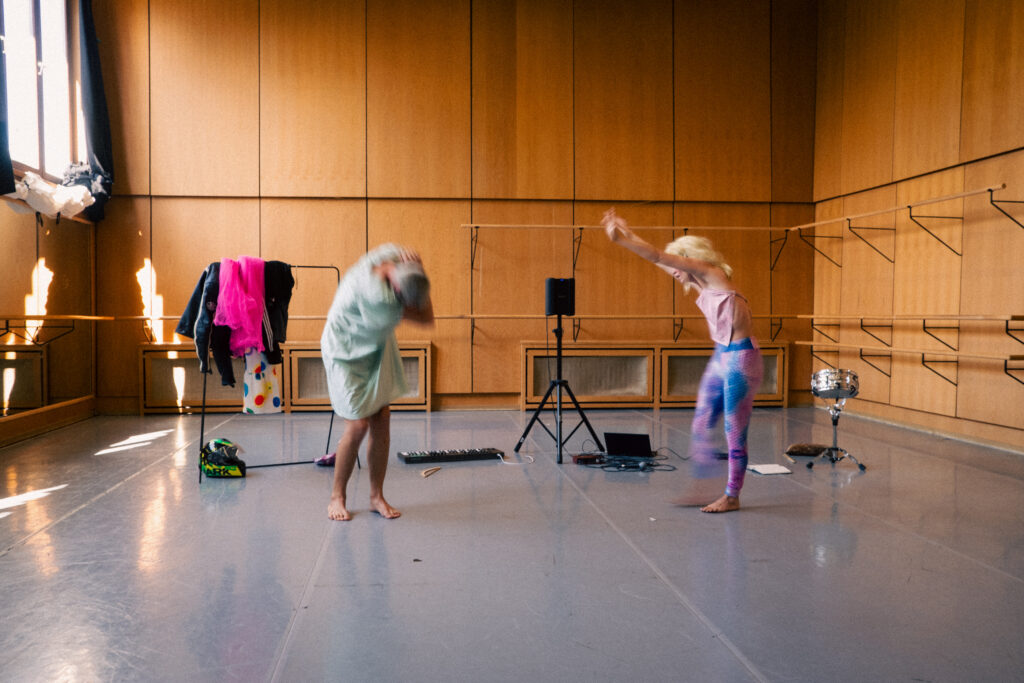Iseult and Tristan is a contemporary chivalry in which the two performer-narrators guide the spectator through the myth, examining its protagonists, ideas of binary gender and roles through the courtly view of love.
In a collage of scenes and tableaux vivants, the work presents an entertaining and cinematic saga, where a woman fights for her man, a nurse with golden hair treats his lady with healing herbs and two intertwined bodies love themselves to death.
At the end of both infinite suffering and rare moments of happiness, the two lovers die for not having been able to live out their passion, due to the rules of society.
Exploring different performative practices and genres, passing opera, abstract and grotesque, the two characters dance, play music, sing and tell stories.



